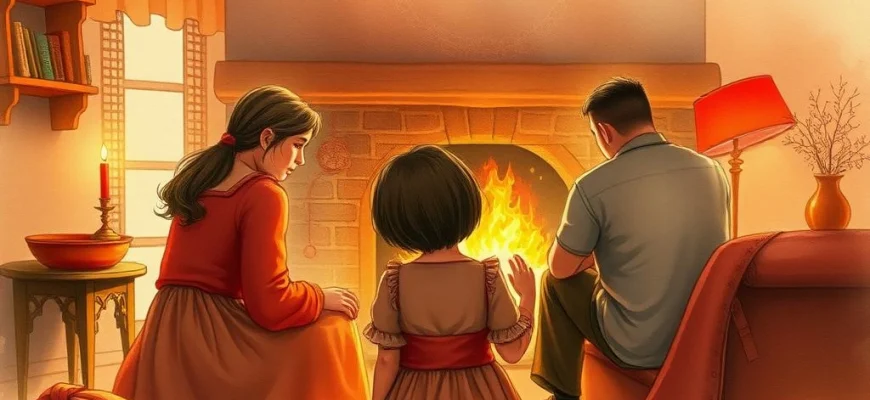If you were captivated by the rich storytelling and haunting beauty of Ingmar Bergman's Fanny and Alexander (1982), you're not alone. This article explores 10 movies and shows that share its themes of family drama, magical realism, and deep emotional resonance. Whether you're a longtime fan or new to Bergman's work, these recommendations will transport you to similarly enchanting worlds.

The Seventh Seal (1957)
Description: A profound exploration of existential themes, blending philosophical inquiry with rich visual storytelling. The film delves into human suffering, faith, and the search for meaning, presented through a mix of realism and allegory.
Fact: The iconic image of the knight playing chess with Death has become one of the most recognizable symbols in cinema history. The film was shot on location in Sweden, using stark landscapes to enhance its meditative tone.
 Watch Now
Watch Now 
The Magician (1958)
Description: A tale of illusion and reality, exploring themes of deception, art, and human nature. The film combines elements of gothic horror with philosophical undertones, creating a mysterious and atmospheric experience.
Fact: The film was inspired by the director's own experiences with critics and the art of filmmaking. It features a traveling troupe of performers, a recurring motif in his works.
 Watch Now
Watch Now 
Through a Glass Darkly (1961)
Description: A deeply introspective film that examines mental illness, faith, and the fragility of human relationships. The confined island setting amplifies the sense of isolation and emotional intensity.
Fact: This was the first film in a trilogy exploring themes of faith and silence. It won the Academy Award for Best Foreign Language Film.
 Watch Now
Watch Now 
Persona (1966)
Description: A groundbreaking psychological drama that blurs the lines between identity, reality, and illusion. The film's minimalist style and experimental narrative techniques challenge conventional storytelling.
Fact: The film's opening sequence, featuring a montage of surreal imagery, is one of the most analyzed scenes in cinema history. It was shot on the island of Fårö, a location frequently used by the director.
 Watch Now
Watch Now 
Cries and Whispers (1972)
Description: A deeply emotional and visually striking film that examines the complexities of family relationships, suffering, and redemption. The use of color, particularly red, creates a haunting and intimate atmosphere.
Fact: The film was originally titled 'Viskningar och rop' in Swedish, which translates to 'Whispers and Cries.' It was the first Swedish film to be nominated for the Academy Award for Best Picture.
 Watch Now
Watch Now 
Mirror (1975)
Description: A poetic and non-linear exploration of memory, time, and personal history. The film's fragmented narrative and lyrical visuals create a deeply personal and introspective experience.
Fact: The film incorporates autobiographical elements from the director's childhood. It was initially rejected by Soviet authorities for its unconventional structure.
 Watch Now
Watch Now 
Autumn Sonata (1978)
Description: A poignant drama that explores the strained relationship between a mother and daughter, filled with intense emotional confrontations and psychological depth. The film's intimate setting and powerful performances create a deeply personal narrative.
Fact: This was the only collaboration between Ingrid Bergman and the director, marking her return to Swedish cinema after decades in Hollywood. The film was shot in just five weeks.
 Watch Now
Watch Now 
The Sacrifice (1986)
Description: A meditative and visually stunning film that grapples with themes of faith, sacrifice, and the end of the world. The long takes and deliberate pacing create a dreamlike, philosophical atmosphere.
Fact: The film was shot on the island of Gotland, with the director's health deteriorating during production. It was his final film, completed shortly before his death.
 Watch Now
Watch Now 
Saraband (2003)
Description: A contemplative drama that revisits characters decades later, exploring unresolved tensions and the passage of time. The film's intimate dialogue and restrained performances create a powerful emotional resonance.
Fact: This was the director's final film, made for television but later released in theaters. It serves as a sequel to 'Scenes from a Marriage,' though it stands on its own.
 Watch Now
Watch Now 
The Virgin Spring (1960)
Description: A harrowing tale of revenge and redemption, set against a stark medieval backdrop. The film's raw emotional power and moral complexity are heightened by its austere visual style.
Fact: The story is based on a medieval Swedish ballad. The film's depiction of violence was controversial at the time of its release.
 Watch Now
Watch Now 








